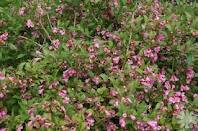Phellodendron
These deciduous trees, commonly known as Cork Trees, are natives of eastern Asia. They have short trunks and wide spreading crowns. P. amurense (Amur Cork Tree) grows 30 to 40 feet high. It has deeply ridged, corky bark and dark green, compound leaves growing 9 to 15 inches long and consisting of 5 to 13 leaflets. Its foliage turns yellow in the fall. Small, inconspicuous, greenish-yellow male and female flowers are produced on separate trees. Clusters of black berries follow the flowers on the female trees and persist on the branches late into the fall and winter. When crushed, the berries and leaves have a turpentine-like scent. The Amur Cork Tree is easy to grow and pest resistant. It is great for growing in cities and along streets. The wood and roots of the Cork Tree are yellow and bitter.
Pot CultivationThe Cork Trees will flourish in loamy soil, though will grow in any good soil. They need to be exposed to full sun. Older trees rarely need pruning, but young trees will need to be trained to develop one trunk. Pruning should be done in the winter. PropagationSeeds can be sown in light sandy soil. The outer, fleshy pulp should be washed from the seed before planting. If they are sown in the fall, they should be planted in a cold frame or some sheltered spot outdoors. They can also be sown in January or February in a greenhouse. When they are large enough to handle, they can be transplanted to a nursery border.
Varieties
|





